#sure I’ll main tag this
Text

#library of ruina#sure I’ll main tag this#I spent waaay too long trying to pause it perfectly on “nuh uh”
218 notes
·
View notes
Text
Touch me while your bros play twisted wonderland
25 notes
·
View notes
Text

in a better world. this could be saileach and outcast
17 notes
·
View notes
Text

having silly concepts
#dee doodles#luke triton#Sure I’ll main tag this#it’s omori btw I just have no further clue what I’d do with this#pl x omori au
8 notes
·
View notes
Text
Bug Color Vision: A Non-Human Angle Towards Color
Welcome to today’s episode of Why Did I Put So Much Effort Into This?! Featuring: bug color vision! I’ve been forking the idea around for a while now, and I figured I should share it with Tumblr in case others are interested as well.
Note that a lot of this information was worked and written with Hollow Knight in mind since it was pooled for my Hollow Knight fic. However, I think this information applies generally to anyone who may be writing fictional bug people. Also note that a lot of the information here is somewhat extrapolated; a lot of the insect (not even *bug! Specifically insect!) color vision research I found focused on honeybees, which are obviously not all there is to insects. I personally try to blend anthropomorphic aspects, ie human-like traits, into my worldbuilding as much as possible and as seamlessly as I can, and that plays into what I say here too. But without further ado:
*bug = anything people would normally consider a bug. This includes insects, arachnids, some crustaceans (namely isopods), and myriapods (centipedes and millipedes), so most arthropods. This post mostly concerns insects, but there will be limited mention on arachnid, specifically spider, color vision, and some speculation about crustacean color vision.
Human Color Vision Refresher
What most people know of color vision is heavily based in human color vision, which is unsurprising. We can’t reliably guess how non-human creatures perceive the world in color, and what we do know are estimates based on the structural mechanisms they use to perceive it. This post will be no different, and on top of that, we would get nowhere if you do not understand how human color vision works. For anyone needing a refresher, or perhaps anyone who never learned this to begin with, here’s a quick summary of it.
Human eyes have many photoreceptors, which are light sensing cells that send signals to the brain. We have two types of photoreceptors: cones and rods. (Rods are used in non-color vision, so we’re not discussing those in this post.) In most humans, there are three types of cones that are stimulated by blue light, green light, and red light respectively. When any of these cone cells are stimulated, they send an electrical signal to the brain, which processes them into a visual, colorized picture.
One thing to note that color vision can only exist if there are at least two different types of cones. Colorblindness, or rather color deficiency, in humans results from one or more of the three cone types not sending signals to the brain. If two of the cone types do not function, this person would have monochromatic vision. This is because you need at least two different types of inputs to compare for color vision to be possible. The more cone types, the more comparisons can be made, and the more colors you can theoretically see. The converse is true as well; with only one cone type, the inputs can only be compared to the lack of light, so there is no color.
The color ‘output’ also depends on the degree of stimulation. Each cone type is most sensitive to a certain wavelength of light. Our blue cones are, as implied, most sensitive to blue light, meaning that they are the most stimulated and send the strongest signal when they detect blue light. However, they are still stimulated by violet light, just not as much as they are by blue light. Through comparing this degree of stimulation in one cone type with that of the other cone types, we can perceive a massive range of colors.
We call this maximum range of colors that we can see the visible light spectrum, which runs from violet light, where the wavelengths are short (around 400 nm), to red light, where the wavelengths are long (around 750 nm). Though, clearly, this is what is visible to humans. Many animals, particularly insects, have a different ‘visible spectrum’ of light. This depends on the type of cones they have. As mentioned before, humans have blue, green, and red cones, meaning our color vision is roughly R-G-B based. This is generally not true for bugs.
Bug Color Vision
For many insects, red light is invisible. Lots of bugs have a green cone, but its sensitivity does not stretch into the part of the light spectrum that we would consider red. They may be able to see yellow, and hesitantly a bit of orange, but deep scarlets and maroons are totally invisible to them. However, they can see into the other end of the spectrum, what we call ultraviolet light. In fact, a lot of insects have a cone that is most sensitive to UV light. To put it in perspective a little, UV light is invisible to humans, but is very visible to many insects, so much so that some flowers have UV absorbing pigments that are used to guide pollinators like honeybees!
Putting this slightly differently, we can consider the visible light spectrum for bugs to be comparatively shifted towards shorter wavelengths. To them, ultraviolet light would just be violet, and red would be infragreen. The coloration of many things would be shifted; red isn’t visible, but UV and the lack of UV is, color mixing and color ratios would shift, etc. Their world should look pretty different from ours, even beyond considering the very likely possibility that bugs don’t process colors like humans do.
On top of that, many bugs are actually dichromatic. Spiders, lots of beetles, and from what I’ve been able to find, many bugs in general have a UV cone and a green cone. To compare it to humans, when someone has a nonfunctional cone type, they are dichromatic and see a more limited range of colors. Assuming bugs process color similarly—and they may well do so if they’re anthropomorphic bugs!—would mean that many bugs are relatively color deficient. They still have color vision, and they can detect UV light and green light perfectly fine, but the number of shades they can distinguish and tell apart may be limited.
In comparison, honeybees are trichromatic like humans, but they have UV cones, blue cones, and green cones, making their vision G-B-UV based. This allows them to see many more shades of colors than their fellow bugs, which is very useful when they are as visual and as prolific of a pollinator as they are. A good number of diurnal insects are also trichromatic as well, and it’s fairly easy to see why.
How This Is Relevant
So what is this useful for? When writing anthro bugs, taking the colors they’re able to see (and those that they can’t see) can create a good many interesting scenarios. It can also have implications on how their societies work. For example, our artificial lights don’t actually produce white light! (Unless you use LEDs, but LEDs use different technology.) They are generally quite yellow; we only think they’re white because our brains color correct them. For bugs, this sort of lighting isn’t going to be particularly helpful, since they’re not very sensitive to yellow light. It would be a pretty dull glow for them, and they’d need a greener light if they wanted to have more illumination. Except green light has a shorter wavelength than yellow light does, and shorter wavelengths typically have more energy. (This is why UV light is considered damaging! Wear sunscreen and protect your eyes, folks.) Technologically, this can be a great deal more challenging to handle. This lack of artificial lighting can impact anthro bug societies in a variety of ways; activity past sundown would be very difficult!
You can also play around with the basal aspects of your worldbuilding. If you want your anthro bugs to be more analogous to human experiences, you can make all your bugs trichromatic. This gives you more room to explore dichromacy in a largely trichromatic society, and also makes it easier for you to describe colors. Trichromacy is also helpful evolutionarily; being able to see more colors means you’re more likely to tell the difference between food and potential predators, and you might find mates more easily. But of course, that comes with a metabolic payoff, and lots of predators get by just fine with only two types of cones. Cats seem perfectly content on exterminating the local bird population with their two cone types, so your bugs will be just fine if you go that route.
In the context of Hollow Knight? Hornet’s no longer our beloved red cloaked spiderwyrm. Though some species of spiders can see red in limited quantities, and most of those being diurnal spiders at that, spiders do not have cones that can detect red light. They literally cannot see the color that Hornet is wearing. It would just look black to them. So she would be wearing a very different color, most likely. The areas of Hallownest would potentially be a lot more vibrant as well, considering the potential for UV pigments that we can’t see being visible to its buggy inhabitants. It also has some rather sinister implications if you remember that bugs cannot see orange. What’s worse than fighting a plague? A plague that you physically cannot see.
Color Mixing Beyond Wavelengths
Of course, biology is never simple. Even human color vision isn’t just the wavelengths of light and the stimulations of our cone cells with nothing else. The existence of magenta as a color that we can perceive more than proves otherwise.
If you look at the human visible spectrum of light, you’ll generally see the classic rainbow of colors plastered over their respective wavelengths. Red at the long wavelength end, then orange, yellow, green, blue, and finally violet at the short wavelength end. But magenta is not on this spectrum. This is because magenta is not an actual wavelength of light.
So what, pray tell, is it? It’s the result of our blue cones and red cones being stimulated, but not our green cones. When two types of cones are stimulated simultaneously, our brains tend to take all the inputs and average them out. So according to that, blue + green = cyan, green + red = yellow, and any shade within a specific color just looks that color. But following this logic, blue + red = green, which is obviously not correct. Evolutionarily, it is advantageous to be able to tell when something is green, like a plant, an unripe fruit, or maybe something poisonous, and when something is magenta. So our brains made up a new color for it.
Something similar can be said of white light, which is also not on the human visible spectrum of light. You’ve likely seen pictures of white light entering a prism and coming out as a rainbow. This is an indirect way of representing that white light is simply all wavelengths of light that the human eye can detect. In other words, if the light your eyes detects stimulates all three of your cone types, you perceive the object as white.
This all may sound sort of obvious, but remember that generally speaking, bugs cannot see red and can see UV. This means that things that look white to us may not look white to them. Lots of otherwise white insects have UV patterning, and again, some flowers have UV pigments that we cannot see that are obvious to bugs. So a white flower for us may actually be more like cyan for a honeybee, and something that is yellow to us may just look green to them.
And, on top of that, recall that honeybees have three cone types as well. Theoretically, if there is some pigment that reflects UV light and green light but not blue light, honeybees should also perceive a type of ‘magenta,’ assuming their brains process these inputs similarly to human brains. This opens up an even bigger range of potential colors that bugs can see, and you can really do anything with the concept. No one really knows what bug color vision looks like, and certainly not a theoretical bug magenta, so go wild with the idea.
Tetrachromacy: Butterflies, The ‘Anomalies’
Trichromacy isn’t the maximum number of cone types you can have. Again, in theory, the more cone types you have, the more comparisons you can make, and the more colors you can see, provided that you use all of said cones for color vision. Some species of butterflies come rather close to this, and here is a handy graph to represent it:

[image description: an infographic showing the sensitivity of different opsins in three different species of butterflies and in mantis shrimp. All three graphs for the butterflies are a mess of colored lines; all of them have at least 8 discrete lines, each of which shows the varying sensitivity to different wavelengths of light. The peaks for all three graphs, particularly for the graph labeled B, overlap in such a way that it is hard to distinguish the peaks of each line. Notably, however, all three graphs for the butterflies have lines corresponding to UV light, blue light, green light, and red light.
The mantis shrimp sensitivity graph is also a mess of lines and peaks, but they have a much more uniform distribution, with each line rising, peaking, and falling in roughly the same shape. There are 11 different lines on this graph, all of which have peaks that are easy to identify. As a whole, however, the graphs look like a colorful mess. end image description]
Oh, did I say handy? I meant messy. Some species of butterflies (and of course the famed mantis shrimp, which we will be ignoring for now) have an absolute motherlode of cone types. The swallowtail butterflies (top left, labeled A) have 8, but I believe some had up to 12 or 13? Either way, that is a lot of cone types. The one unifying factor in all three graphs for the butterflies, however, is that all of them have cones for UV light, blue light, green light, and red light.
While these graphs look spectacular, not all of these cones are used in color vision. Scientists aren’t too sure what they are used for; one hypothesis is that some may be used to detect sudden shifts in light intensity, which can mean a predator is flying above. However, they are fairly certain that their UV, blue, green, and red cones are used for color vision. This makes these butterflies tetrachromats with R-G-B-UV based vision, and they are able to see an enormous range of colors. Research on butterflies has also found that they are almost as good as humans are at distinguishing between shades of color too, so they can actually see far more colors than we do! (Mantis shrimp, unfortunately, are not nearly as good at color differentiation as either butterflies or humans. Presumably they just process color vision differently. No secret shrimp colors to be found, sadly.)
Not only does this mean butterflies have access to a wider range of colors that are actual wavelengths of light, it also means they have way more potential color mixing opportunities. It’s entirely possible that they can see a color that is the combination of just red and UV, or green and UV, or UV, green, and red. And really, blue, green, and red but not UV wouldn’t look white to them, because white results from all of the cone types being stimulated.
I do have to note that not all butterfly species have this number of cone types. Some are simply trichromatic, like honeybees. But for writing purposes, it could be pretty interesting to make butterflies the tetrachromats. They are able to see many things that other bugs cannot, which would either inspire awe or fear in them. It’s also possible that art made by butterflies is more highly sought after, because the tiny details they’re able to add and see clearly make their art multitudes more vivid than art created by other bugs. (Butterfly Lurien writers~) And these are just possible implications I could think of off the top of my head. The possibilities are quite literally endless.
I didn’t do nearly as much research on this, but it seems some species of dragonflies are also tetrachromats! Really, you can designate certain species of bugs to be tetrachromatic or dichromatic or what have you, without even necessarily adhering to real life biology. But even what’s found in real life and extrapolating it for anthropomorphic bugs can be really interesting.
Non-Insect Color Vision
I’ve mentioned arachnids briefly above, but there isn’t much more to say beyond reiterating that most spiders, and likely most arachnids, have G-UV based vision. This varies a little depending on behavior; nocturnal bugs, not just arachnids, tend to have weaker color vision, but are more likely to use UV light to navigate. And considering that the spiders in Hollow Knight live in underground cave systems, it’s not too far a leap to assume they evolved from a nocturnal species of spider.
On the other hand, crustaceans tend to have B-UV based vision. Lots of crustaceans are water dwelling, and water is not an easy medium for light to penetrate. The deeper into water you go, the less light reaches you, and red light is one of the first wavelengths to go. As you go further down, the longer wavelengths become more and more sparse because they have less energy in them. They simply don’t have enough energy to keep going, but blue light and UV light, with their shorter wavelengths, keep going just fine. This is why crustaceans have B-UV based vision, if they are dichromatic at all.
As for terrestrial crustaceans, particularly isopods as per popular fanon about Quirrel? It varies. Pillbugs are actually nearly blind, having only weak light sensing eyes that do not detect color. But they typically live in damp, dark places, and have little need for vision to begin with. Hermit crabs are dichromatic, possibly with G-B based vision. Of course for anthropomorphic crustaceans, your word as writer is law, but it’s possible that they are generally dichromatic compared to other bugs. I’m not too clear on when crustaceans re-evolved to be terrestrial, but that can be one argument you can make for them being dichromatic. They simply haven’t been terrestrial for long enough for a novel trichromatic gene to pop up. Though, to be fair, it’s more likely for traits to be lost rather than gained, and it can also just be that: it’s unlikely that terrestrial crustaceans independently evolved trichromacy.
Admittedly, I haven’t done research on myriapod vision at all. I don’t know what their eyes are like, but once again, in a world of anthro bugs, your word as writer is law. You can go as biology focused as you want. Regardless, I do hope this post is interesting and has made some of you reconsider your worldbuilding, and above all else, happy writing!
#hollow knight#sure i’ll main tag this#what other tags do i even put#‘hey look at this dumbass reading five papers for a fanfic’#lol
71 notes
·
View notes
Text
whenever i’m sad i imagine my ds9 si showing garak and julian any media he likes and then them having a very heated discussion about it
currently i’ve been thinking of them all fighting about mlp fim and ot makes me pee my pants laughing
5 notes
·
View notes
Text
Being an eldritch monster and autism go hand in hand actually
#this is about#John doe malevolent and Jonathan sims the magnus archives actually#but I’ll be honest I’m sure there’s more#I am both autistic and an eldritch monster so I would know#yeah fuck it go in the main tag let everyone see my ramblings#malevolent#the magnus archives#tma#fuck it - name your blorbo so i have more shit to read / listen to
199 notes
·
View notes
Text

does this mean anything
#☕️!- clove speaks#like Martha speaks#Yknow what sure I’ll put this in main tags#Sebastian Michaelis#Jade leech#Korekiyo shinguji#obey me barbatos#these r all jokes#I had a purely aesthetic attraction to Sebastian and I only started liking Barbatos a few days ago#And I liked korekyo in middle school#So#odk where I was going w that
72 notes
·
View notes
Text
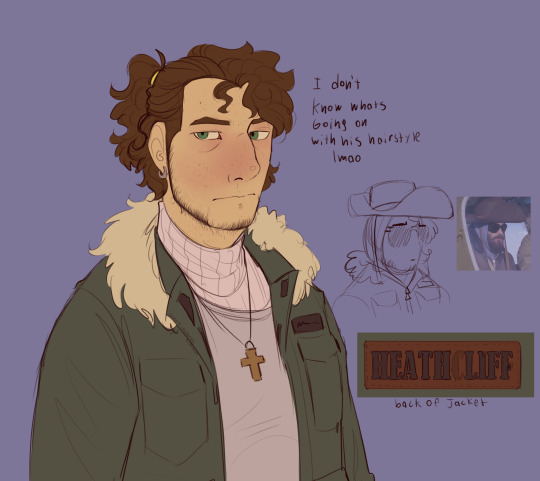
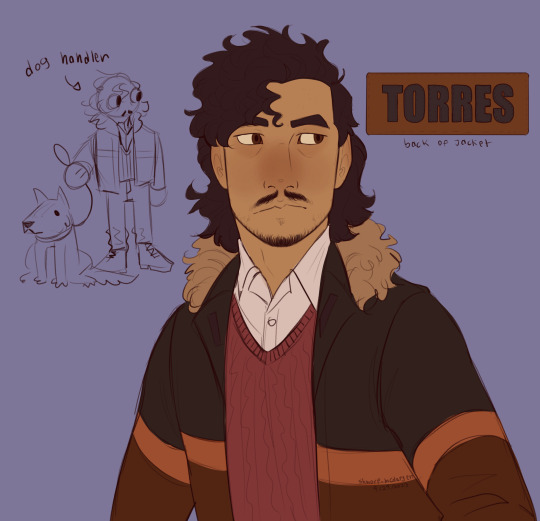
Mark and Cesar in The Thing au!
Brief descriptions below the cut:
Mark (34 years old): The mechanic at the station. He's friends with Cesar, and they have been friends since high school. Not super social with his peers, and only really talks to Cesar casually. (Though their friendship is. strained at times. they're trying to work things out though.) Doesn't trust new people easily. Mark's also estranged from his family, aside from maintaining contact with his sister and contacting her sometimes.
Cesar (35 years old): The Dog Handler at the station. Because of this, he spends a lot of time with the dogs. (definitely an animal lover.) A bit more social than Mark, but not incredibly so. He's nice, though definitely speaks his mind on things going on, and isn't afraid to be kind of rude about it if necessary.
#the mandela catalogue#mandela catalogue#tmc#tmc The Thing au#Thing Mark#Thing Cesar#(still not sure on these tags but I’ll change them if we come up with anything better /lh )#shmorps art#YIPPIE!! NEW AU!!!!#pretty plain sketches but. just getting an idea of their designs first and foremost /lh#Mark's kinda. the Macready of the group. basically the main guy in the station in this story.#Also side note this is ANOTHER au co-owned with Rufus (@Anotherr-side) so thats funky huh-#sory alt au. sory Mandela Prophet au. sory Lab au. HSH and Thing au are my new best friends /LHJJJJJJ
164 notes
·
View notes
Text
Chandlo has been found dead on Snaktooth Island. SAD. Well there’s other bodybuilders
#bugsnax#okay sure. I’ll put this in the main tags.#This will probably only be funny to Hispanic people in the fandom but so be it#(I am not Hispanic but my Hispanic friends found this funny enough so I’ll take what I can get)
294 notes
·
View notes
Text
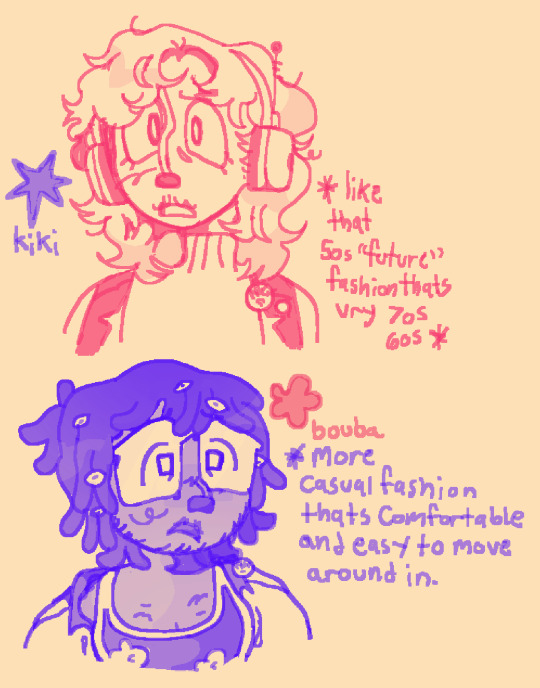

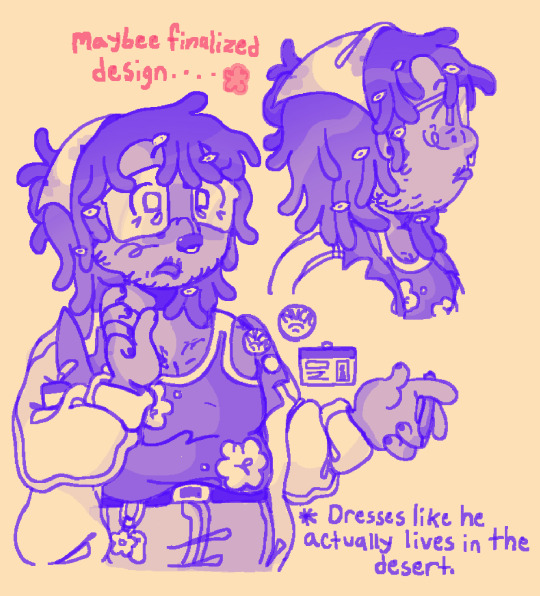
Trying to figure out how to draw these two again
#wtnv#cecilos#cecil gershwin palmer#carlos dave robles#cecil palmer#carlos the scientist#why do you two have so many titles#welcome to night vale#I’ll main tag this too sure
140 notes
·
View notes
Text
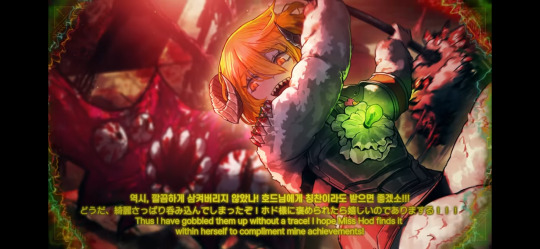

hey don, nice void dream ego gift you got there
update!! she has fragment of the universe’s too! (little hearts next to the meat lantern lure on her chest)
i also found out the new outis id has bloodbath’s ego gift which is. concerning for several reasons
#limbus company#sure i’ll main tag that. i think it makes sense for her#w the whole impossible dream thing#this could be a mostly nothing addition but i really like void dream so i WILL look into it#to me it’s a Hong Lu abnormality but it is also VERY much a don abno and we know.#VERY little about don. it’s kinda fucked up#but yea she’s got sheep horns from void dream and meat lantern pointy teeth#assigned caretaker of kinda lumpy white things ig#i haven’t looked too into meat lantern but that’s also rly don quixote. i loveee chatactwr analysis thru shit like this#pachiposting
63 notes
·
View notes
Text
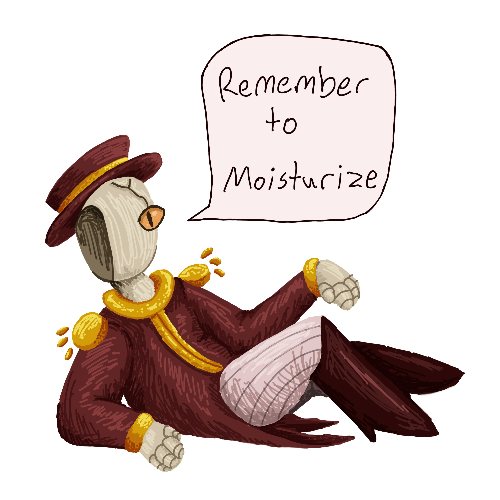

little nikola doodle + banner for my sheezy.art :3
35 notes
·
View notes
Text
Happy WIP Wednesday!
Here is a WIP from a fic that I started writing for something but had to put on hold for now. If you remember this poll from a bit back, it was for this fic!
Enjoy! As always, wording is apt to change.
—————
“You got it?” Blinking the literal stars from his vision, Ingo realized Akari was leaning over the fencepost, staring back down at him, and Rei was holding his hat out to him – it must have been knocked off.
“...I ah, appreciate the offer Miss Akari, but I believe I can handle it.” He brushed the dirt off of his coat as he got back to his feet, his tone somewhat betraying the determined resolve in his expression. “The route may be a bit more rough than anticipated, but even when some passengers cause more of a disturbance than others, I always ensure they reach their intended destination. I have yet to report a permanent derailment, and I intend to keep it that way.”
Receiving his hat back from Rei’s outstretched hand, Ingo situated it back on his head, before casting a glance back at Zoroark, standing hunched on the battlefield. Lips were pulled back to expose gnarled teeth in a display that would have suggested aggression at first glance. But beneath his undulating wisps of fur, his eyes were crinkled in unmistakable amusement.
The gangly pale creature actually seemed to be laughing at him.
Zisu’s zoroark was not unlike his wild kin out in the icelands. He was just as unpredictable as every other living spectre he’d encountered. Just as intimidating. Just as viscerally connected to the ingrained disposition the entirety of his species seemed to act on.
Except, the rest of his species used it to fuel their vicious actions, fully leaning into a dangerously aggressive hostility.
Zisu’s Zoroark, it appeared, simply resigned himself to being petty.
#submas#ingo#warden ingo#akari#Zisu’s Petty zoroark#pokemon akari#rei#pokemon rei#pokemon legends arceus#pokemon legends#pla#pokemon#wip wednesday#yeah sure I’ll put this in main tags
77 notes
·
View notes
Text
no more sad double life rancher duo content what if they’re in a secluded void that’s a forest where they have a small house with a couple of chickens and a small farm and they wake up in the morning and have bread by the windows where sunlight softly pours into the room. and what if they’re happy there, finally at peace. what then.
#i don’t know how the afterlife works in the life series i’m still new but so what. maybe they should defy the canon.#sorry i am listening to the bug collecter by haley heynderikx and i . well i felt .#double life smp#rancher duo#tangotek#jimmy solidarity#sure i’ll put that in the main tags
762 notes
·
View notes
Text
Thinking about Lan Sizhui teaching Jin Ling how to play guqin.
Thinking about Jin Ling absolutely bored to tears by the fundamentals until he hears how beautifully Lan Sizhui plays and suddenly takes an interest (in the guqin, definitely the guqin, he’s interested in the guqin only, okay??)
Thinking about Jin Ling practicing outside of classes because he wants to impress Lan Sizhui by how much he’s improved and wants to make him proud and wants to see his face light up with a smile—I mean, what? No no no, he just wants to show initiative to learn, that’s all there is to it, nothing more. Nothing at all.
Thinking about Lan Sizhui finding Jin Ling asleep on his guqin after a night of wearing himself out with extra practice and gently waking him up to safely escort him back to his room so he doesn’t get caught by their seniors. Meanwhile, Jin Ling sleepily leans against him on the walk back to his room because it’s normal, he’s just tired, it’s obviously normal because Lan Sizhui slips his hand into his and smiles and Jin Ling’s heart feels like it’s on fire. Oh no.
Thinking about Jin Ling opening up to Lan Sizhui about his nightmares from all the trauma he’s endured and Lan Sizhui staying to play guqin for him until he falls asleep, each note chasing away every bad dream that tries to disturb him.
Thinking about them practicing guqin alone together the next day. And the day after. And the day after that—and they really are practicing but it’s a little hard to focus when Lan Sizhui keeps putting his hands over Jin Ling’s to move them to the correct strings, and Jin Ling’s face is a breath away from Lan Sizhui’s every time he leans over to help him.
It’s just guqin practice, that’s all there is to it, perfectly normal. 🩵💛
#zhuiling#blorbo thoughts on the morning bc their tags are being filled with boring discourse again and i need something cute and fun 😭#ONLY tagging as zhuiling too since main tags always attract fanon-obsessed antis for some reason LOL#anyway#this is a v aspec activity too bc JL definitely would want to learn and become the best he can possibly be at anything really#and LSZ definitely would want to teach and be an effective teacher#also#JC asking JL what he’s learned so far and JL is like ‘um…. uh….. um if you pluck the string by the thingy it…. does a thing???’#he’s learned stuff for sure it’s just hard to think after being alone with your crush aishajhd go easy on him JC lmaooo#apple babble 🍎#also guys reminder to read my faq and blacklist zhuiling tag if it bothers you#I don’t waste time fighting people about fictional characters on the internet 🤷♀️#this is my space and I’ll post whatever I want thanksssss 🩵💛🩵💛#I actually already wrote a lot of this into a fic ahahaHAHA#it’s the companion fic to the manor fic tho so it’ll be a hot minute before it’s posted
58 notes
·
View notes